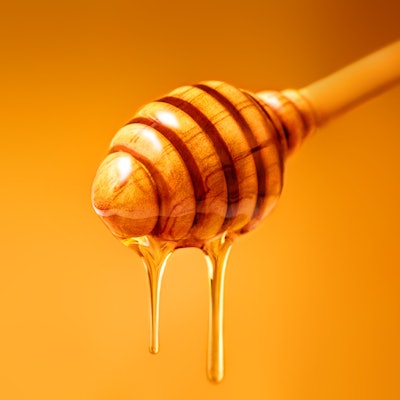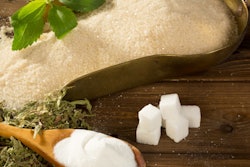
I thought my dental colleagues were going to laugh me out of my profession when I suggested that raw honey could be used to brush teeth. Well, the research is clear: Honey ain't just sugar.
Several peer-reviewed medical articles have explained how raw honey could be used in the mouth to decrease the pathogens causing tooth decay and gum disease.
In an April 2020 article published in the Journal of Antimicrobial Chemotherapy, the authors concluded: "Honey showed a significant antimicrobial activity against all targeted periopathogens. Additional experiments are required to explore the entire antimicrobial spectrum of honey towards all pathogens involved in periodontal disease."
To reach that conclusion, the authors researched various databases since January 2019 for well-designed clinical trials and in vitro studies exploring the antimicrobial effects of honey against the bacteria causing periodontal disease. From all the databases, the investigators found five randomized controlled clinical trials and 11 well-designed in vitro studies.
Honey is complex
There are various types of honey, but manuka honey and multifloral honeys are among the most frequently researched varieties. That may be for good reason. Manuka honey may be the best type of honey.
 Dr. Alvin Danenberg.
Dr. Alvin Danenberg.As with all raw honey, manuka honey is roughly 80% sugars and 17% water. The last 3% is composed of minerals, organic acids, enzymes, etc.
Honey's sugar content is made up of about 31% glucose, 38% fructose, and a mixture of more complex sugars that are harder for the body to break down. Honey also contains 4% to 5% fructo-oligosaccharides, which are excellent prebiotics to feed beneficial bacteria in the gut.
All honeys contain about 200 biologically active chemicals. These raw and unfiltered honeys are a good source of amino acids, B vitamins, zinc, potassium, iron, calcium, magnesium, and phosphorus.
But manuka honey has up to four times the nutritional content of all other flower honeys. Most of the pharmacological effects of honey come from polyphenols, which are found in large concentrations in honey.
Manuka honey also has concentrations of methylglyoxal, a unique compound with nonperoxide bacteriostatic properties. This biologically active compound is not present to any great extent in other honeys, and it enhances wound healing and tissue regeneration by its immunomodulatory properties, according to a study published in Molecular Nutrition & Food Research.
Furthermore, in 2017, Niaz et al published a review in Current Drug Metabolism evaluating the tissue regenerating effects of manuka honey. Their research showed that manuka honey "can inhibit the process of carcinogenesis by controlling different molecular processes and progression of cancer cells," the authors stated.
Numerous studies, including a 2018 study published in AIMS Microbiology, have shown that the antibacterial properties of honey primarily are due to its hydrogen peroxide and methylglyoxal content. Other bioactive components in honey that assist in its antimicrobial properties are phenols and flavonoids.
In addition, manuka honey has a low water content and a moderate acid level of pH 4.3. These attributes contribute to its significant antibacterial potency.
The "sugar" part of honey also contributes to its medicinal benefit. The high sugar content causes hypertonic conditions around microbes, which leads to the lysis and destruction of the microbial cell walls.
9 oral benefits of honey
All this research into honey has shown it has some surprising oral health benefits. Below are nine ways honey can benefit the mouth and gums:
- Honey exerts antibacterial effects on nearly 60 species and prevents the development of resistant strains of bacteria.
- Manuka honey is effective in preventing the growth of biofilm organisms, reducing the production of acids, and reducing gingivitis.
- Randomized controlled trials indicate honey helps prevent dental caries and gingivitis following orthodontic treatment.
- A double-blind randomized controlled trial demonstrated that manuka honey and other raw honeys are almost as effective as chlorhexidine as a mouthwash.
- Manuka honey controls odor and inflammation in wounds secondary to squamous cell carcinoma of the oral cavity.
- Honey has cytotoxic effects on cultured oral squamous cell carcinomas.
- Multiple reports indicate honey is beneficial in the treatment of radiation-induced mucositis in people undergoing curative radiotherapy for their head and neck cancer.
- Honey is helpful in treating dry mouth in people undergoing radiation treatment for their head and neck cancer.
- Honey enhances wound healing in nonhealing or recurrent wounds in the head and neck area after radiotherapy.
Practical applications
There are a number of ways to get to the benefits of honey in your daily routine. Here are just a few:
- As toothpaste: Put about 0.5 teaspoon of manuka honey in your mouth and spread it around your teeth using your tongue. Then use an electric toothbrush as you would normally brush.
- For oral soft-tissue lesions: Swish 0.25-0.5 teaspoon of honey around your mouth for one minute or so, then swallow. Use as often as necessary.
- For lips and corners of mouth: Apply manuka honey to dry lips and sore corners of the mouth as needed.
- For systemic benefits: Eat about 0.5 teaspoon of honey two to three times a day for benefits such as improving symptoms from upper respiratory infections, preventing gastric ulcers, and improving digestive symptoms.
- As mouthwash: If you feel the need to freshen your mouth, swish 0.25-0.5 teaspoon of honey, then swallow. This routine also works if you have dry mouth or xerostomia.
Purchasing options
As you can see, honey -- and especially manuka honey -- wears many hats. It can be a toothpaste, an antibiotic, an antiviral, an antifungal, a regenerative agent, an anticancer substance, an antioxidant, a prebiotic, an anti-inflammatory, and so much more. Another beautiful thing about honey is that it is an animal-based food, which is why I include in my modified carnivore diet that I call the Better Belly Blueprint.
If you want to purchase manuka honey, there are a few things you should know. The New Zealand government's Ministry for Primary Industries (MPI) created the first global standard and scientific definition for manuka honey in early 2018. This is the only government-regulated and approved standard for manuka honey in the world.
As of February 5, 2018, all honey labeled as manuka honey and exported from New Zealand is required to be tested to show that it meets the MPI standard before it can lawfully be exported. The test results from the certifying lab must accompany the export documents for the manuka honey ensuring that the product packed in New Zealand is genuine.
I usually purchase manuka honey from Manuka Health of New Zealand. I keep honey stocked in my medicine chest, kitchen pantry, and bathroom, where I keep my toothbrush, TePe EasyPick floss, and toothpaste.
There are many manuka honeys for purchase. You should research brands before you make your decision.
Dr. Alvin Danenberg has retired from the private practice of periodontics in Bluffton, SC. He continues to be on the faculty of the College of Integrative Medicine and created its integrative periodontal teaching module. He also spent two years as chief of periodontics at Charleston Air Force Base earlier in his career. His website is drdanenberg.com.
The comments and observations expressed herein do not necessarily reflect the opinions of DrBicuspid.com, nor should they be construed as an endorsement or admonishment of any particular idea, vendor, or organization.


















